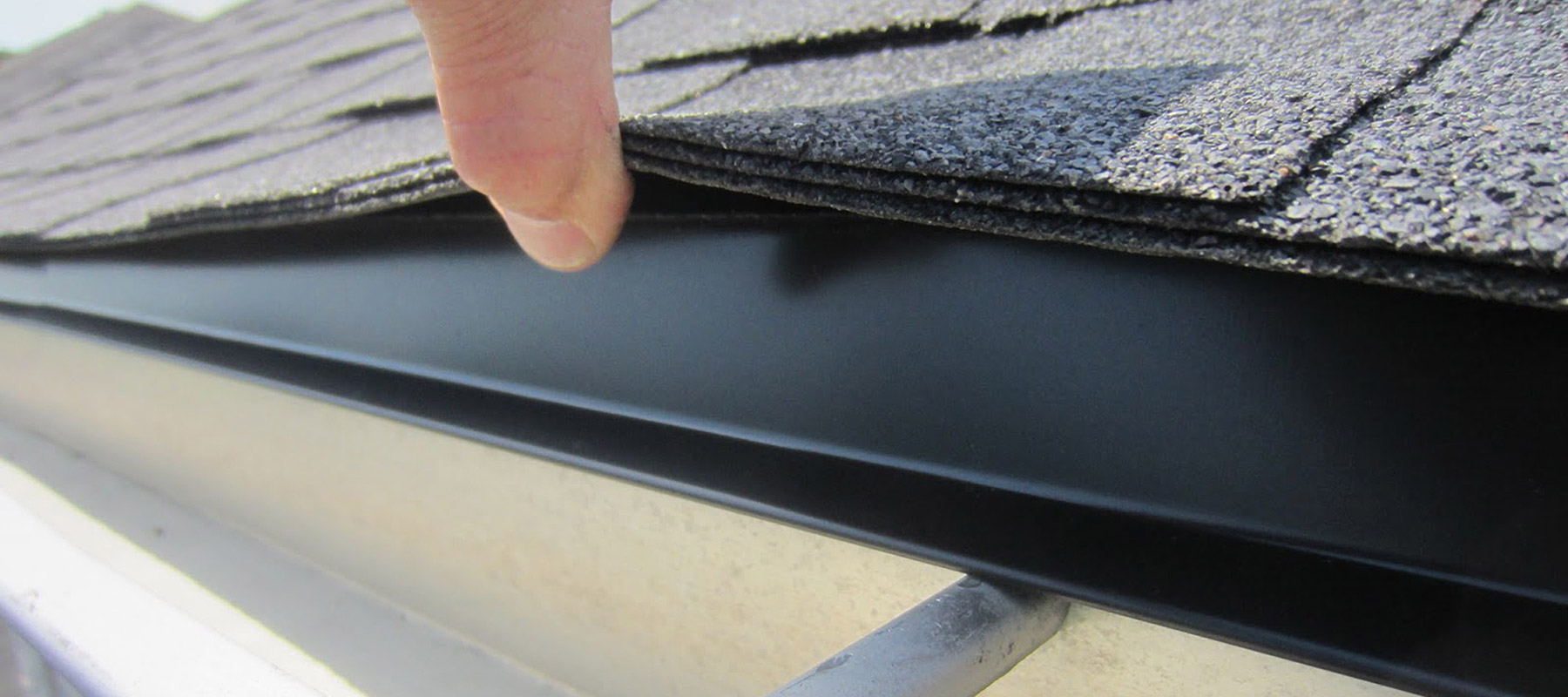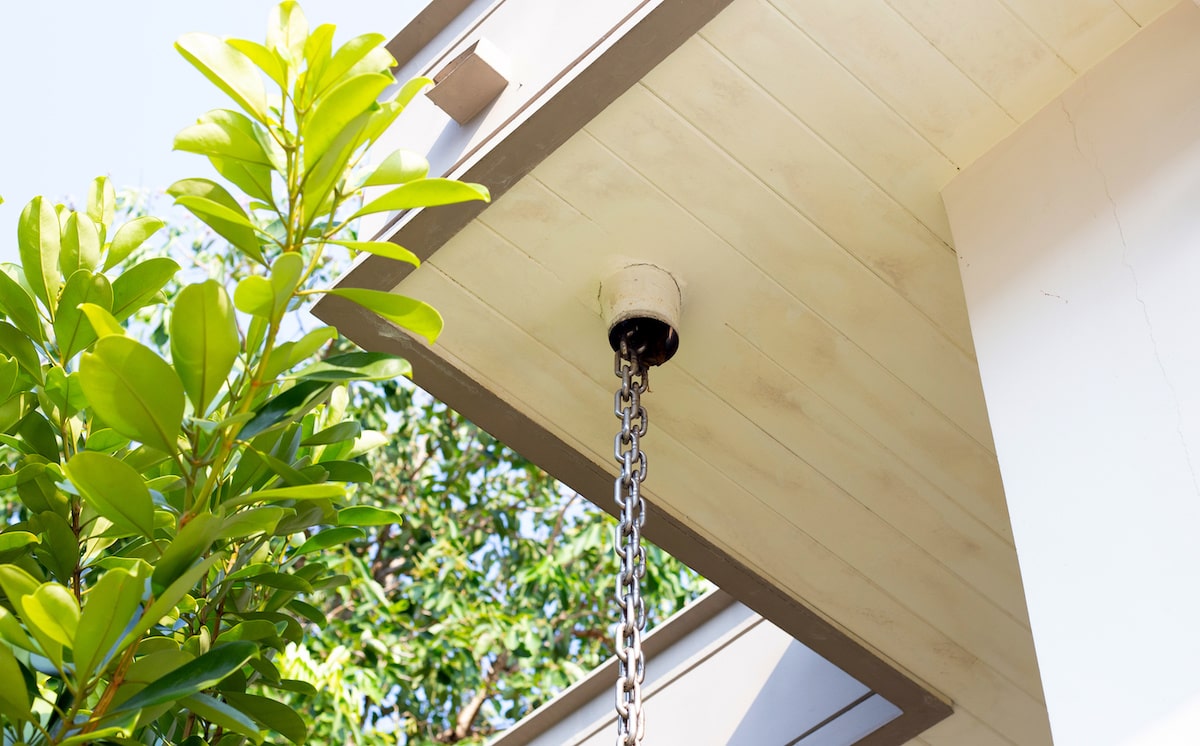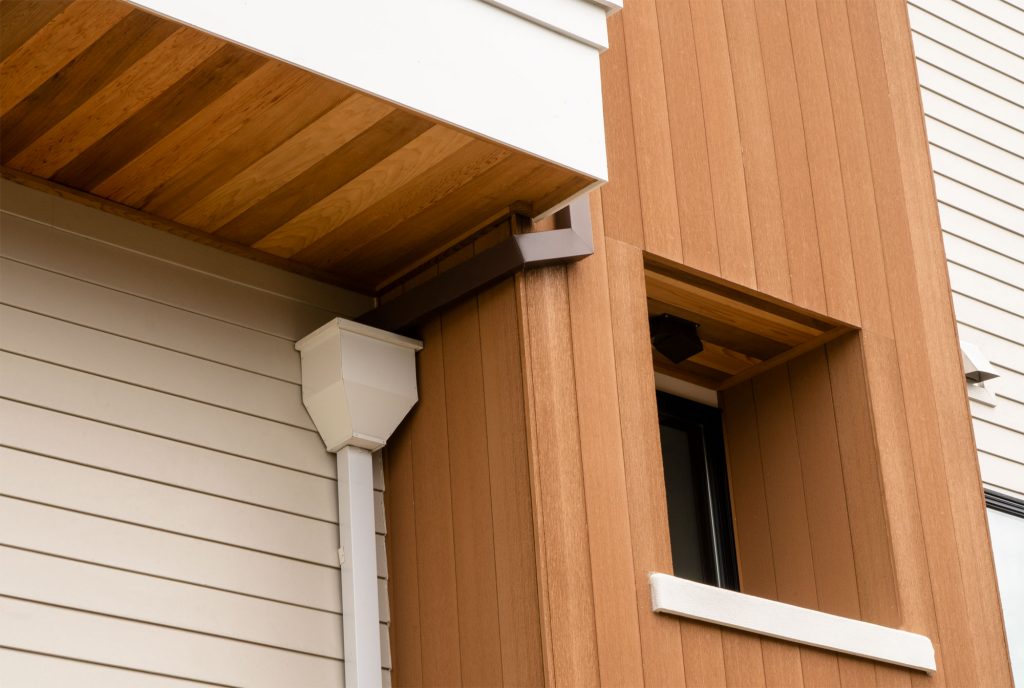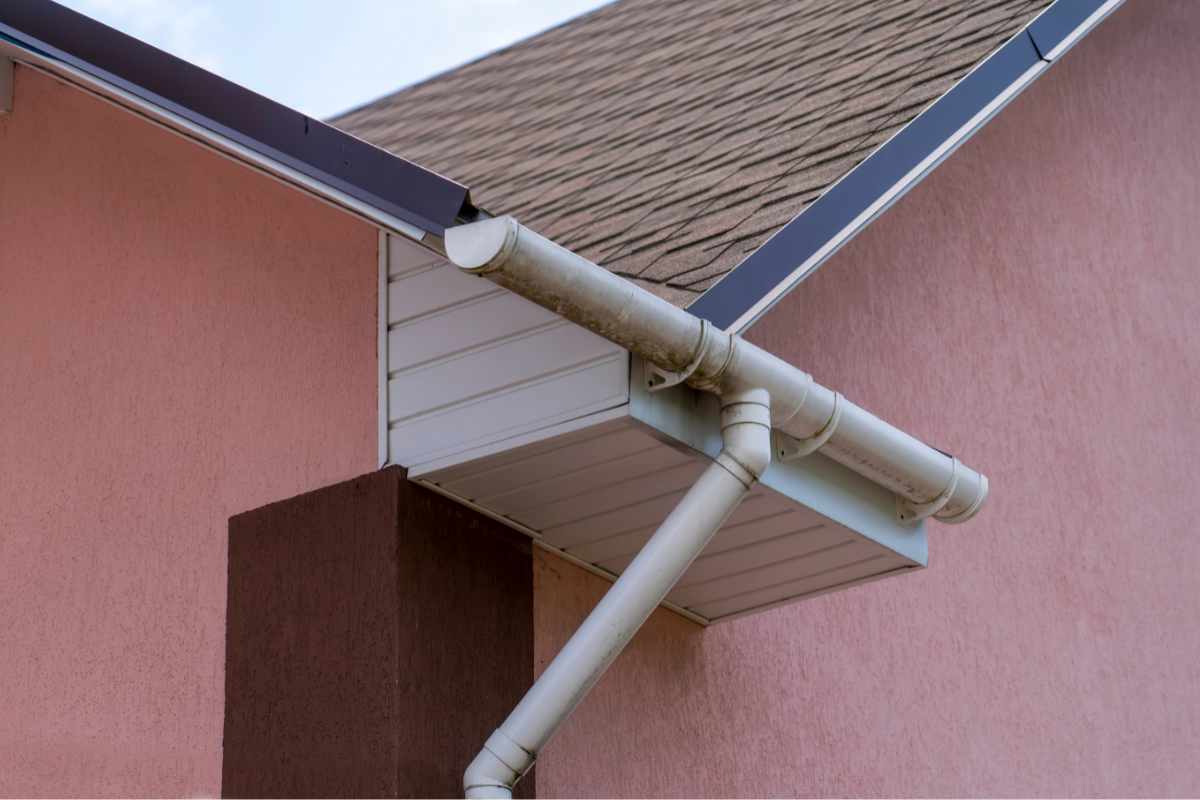Tired of standard gutters detracting from your home’s curb appeal? It’s time to think outside the downspout! Today’s innovative rainwater solutions let you protect your property without compromising style.
Whether you crave a natural look to blend with your yard, demand low-maintenance ease, or simply want options cheaper than traditional gutters, help is here. We have scoured the landscape for alternatives that upgrade function without sacrificing form.
Drip Edge
Drip edges play an important role in rainwater management for homes, whether or not gutters are present. Located along the edges of the roof, drip edges work to direct flowing water straight down the side of the house rather than allowing it to stream down the fascia board. This helps prevent water damage issues like rot that can form when rain is continually making contact with wood surfaces.
Belco Forest Products states the fascia board itself plays a crucial supporting role. It provides attachment points for gutters and tiles while also offering a surface for roof flashing and sheathing to adhere to. This ensures a weather-tight seal in the roof area.
While drip edges alone do not represent a complete rainwater control system, they are an essential component of any roofing design focused on properly handling water runoff.
With drip edges in place, water will drip straight down the side of the home rather than potentially pooling where it isn’t wanted. For homes without gutters, additional drainage solutions below the drip edge may be needed to fully redirect water away from the foundation.
Homeowners with installed gutters should also ensure drip edges are properly fitted as intended. Drip edges and gutters can form an effective partnership for removing water from the roof area while protecting structural elements like fascia boards from prolonged exposure.
Regular checks that both features remain intact and functioning properly over time can help maintain a roof system well-suited to shedding water where it belongs.
Rain Chains
Rain chains serve several beneficial purposes. Primarily, they effectively direct roof runoff and gutter water away from a home’s foundation, helping to prevent soil erosion. This diverted water can then be captured to provide a sustainable water source for activities like gardening.
Additionally, rain chains offer an aesthetic alternative to standard gutters while coming in a variety of artistic designs that enhance a home’s appearance.
Rain chains are commonly around 8 to 8.5 feet in length, though extensions allow for custom sizing. Diameters for the individual water collection segments can range from 2 to 4.5 inches wide.
There are two primary rain chain styles. Cup-style chains effectively handle larger water volumes and come in decorative shapes like flowers or fish. Their directional design moves water smoothly. Link-style chains have a sleek, modern look preferred for lighter rainfall areas. However, their exposed links can sometimes splash water messily.
For heavy rainfall regions, cup chains are favored as their enclosed cups transport water efficiently with minimal splashing. This directed flow makes them well-suited for collecting roof runoff for utilitarian purposes such as watering plants and gardens. Overall, rain chains provide both functional and aesthetic benefits to residential water drainage systems.
Box Gutters
Box gutters differ from conventional rain gutters through their structural integration along the inside edges of roofs. This concealed placement within the building architecture provides a streamlined appearance. Functioning as channels, box gutters collect rainfall and guide it toward directed downspouts for controlled drainage away from the structure.
A key advantage of box gutters is their enlarged capacity. As part of the building framework, box gutter installations on expansive commercial and industrial roofs can manage sizable water volumes, reducing risks of overflow or clogging. Their deeper profile accommodates high rainfall amounts.
Characteristically, box gutters involve larger sizing and internal placement within roof sections. This design allows the handling of substantial water flow, making them suitable for non-residential buildings.
The primary benefit is the capacity to control heavy precipitation, which homeowners in rainy areas may appreciate. However, interior positioning can complicate maintenance access over time. Costs generally range from $4-30 per linear foot, varying with the materials selected. Overall, box gutter functionality relies on concealed placement and enlarged sizing for high-volume rainwater control in larger-scale buildings.
Drip Path
Drip paths provide an affordable way to redirect water away from homes without the need for gutters. They involve placing durable materials like concrete pavers, rocks, or bricks on the ground directly beneath roof overhangs. These materials are installed at an angle to safely guide water draining from the roof to the yard.
Homeowners have flexibility in material selection for drip paths. Options include plastic, metal, or concrete – ensuring compatibility with different architectural styles. Installation tends to be quite simple as well, just lining up angled materials along the perimeter of the roofline. When paired with drip edges, drip paths can substitute for traditional gutters to direct rainfall.
This DIY approach offers an easy water management solution. It only requires placing sturdy building blocks or stones below the roof edge sloped outward. The angled surface diverts water from damaging a home’s foundation by draining it across the yard instead of being absorbed into the soil. Maintenance tends to be minimal once established.
In conclusion, upgrading your home’s gutters doesn’t have to be a mundane task limited to conventional options.
By exploring alternatives such as drip edges, rain chains, box gutters, and drip paths, you can enhance both the functionality and aesthetics of your rainwater management system. Whether you prioritize durability, eco-friendliness, or architectural integration, there’s a solution to suit your needs.





